Errors when installing solar panels in a home
In a domestic solar installation you have to think long-term. Every euro you invest you will recover! but not tomorrow. And here, the quality of the solar panels, the inverter and the components, the planning or the installation company, do matter, a lot.
A technical or legal error when installing panels can reduce performance. It is an investment that requires thought… Common problems and errors?
1. Poor orientation or presence of shadows
A poorly oriented or shaded panel can produce 20-30% less energy. In Spain, the ideal orientation is towards the south and with an inclination between 30° and 35°, although it may vary slightly depending on the latitude and consumption pattern.
Look at the following image to understand the orientation of solar panels in the southern and northern hemisphere:
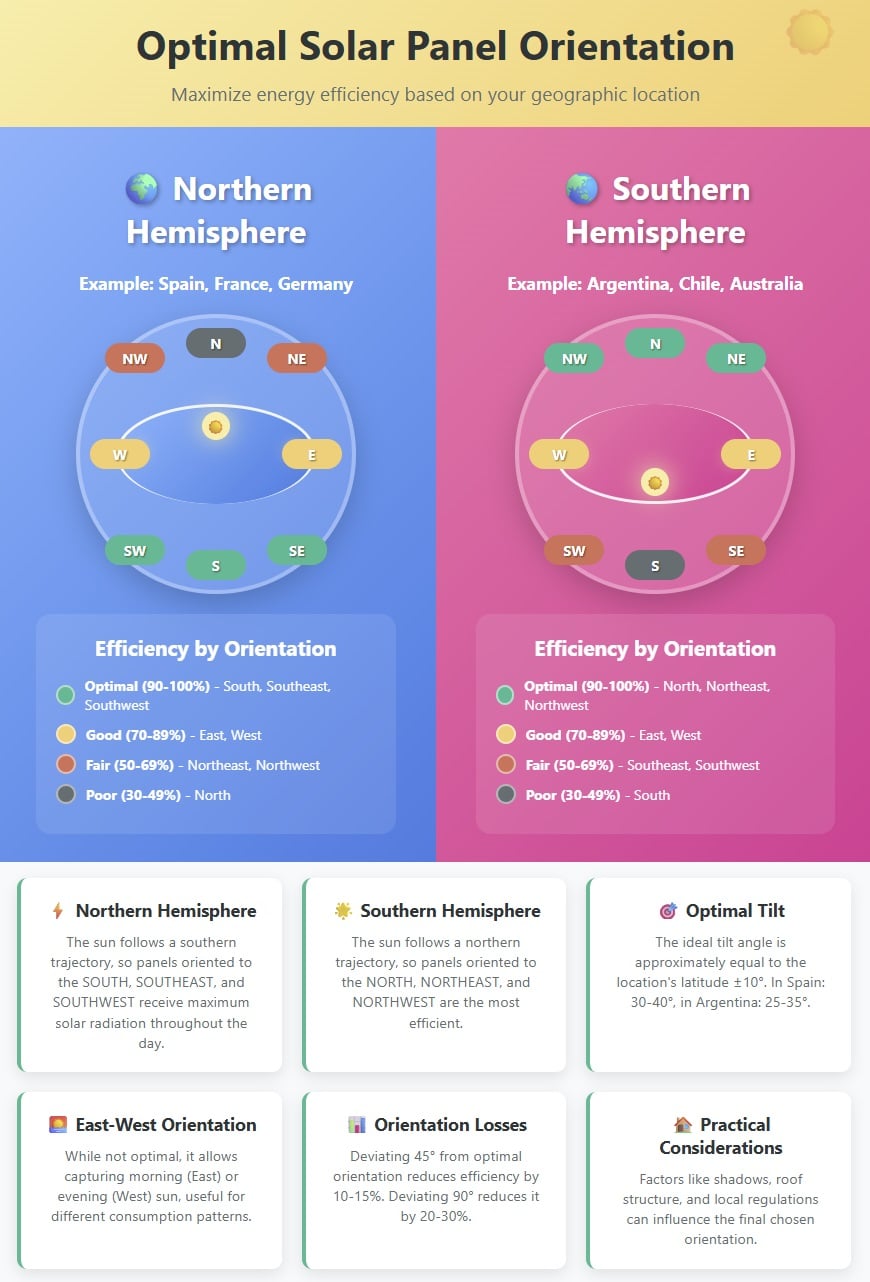
Obviously, we have to avoid obstacles: trees, chimneys, high walls, etc., that can cast shadows on the photovoltaic installation.
A simple way to identify the shadows that can affect a house in a general way is with the Shadow Map tool. An example:
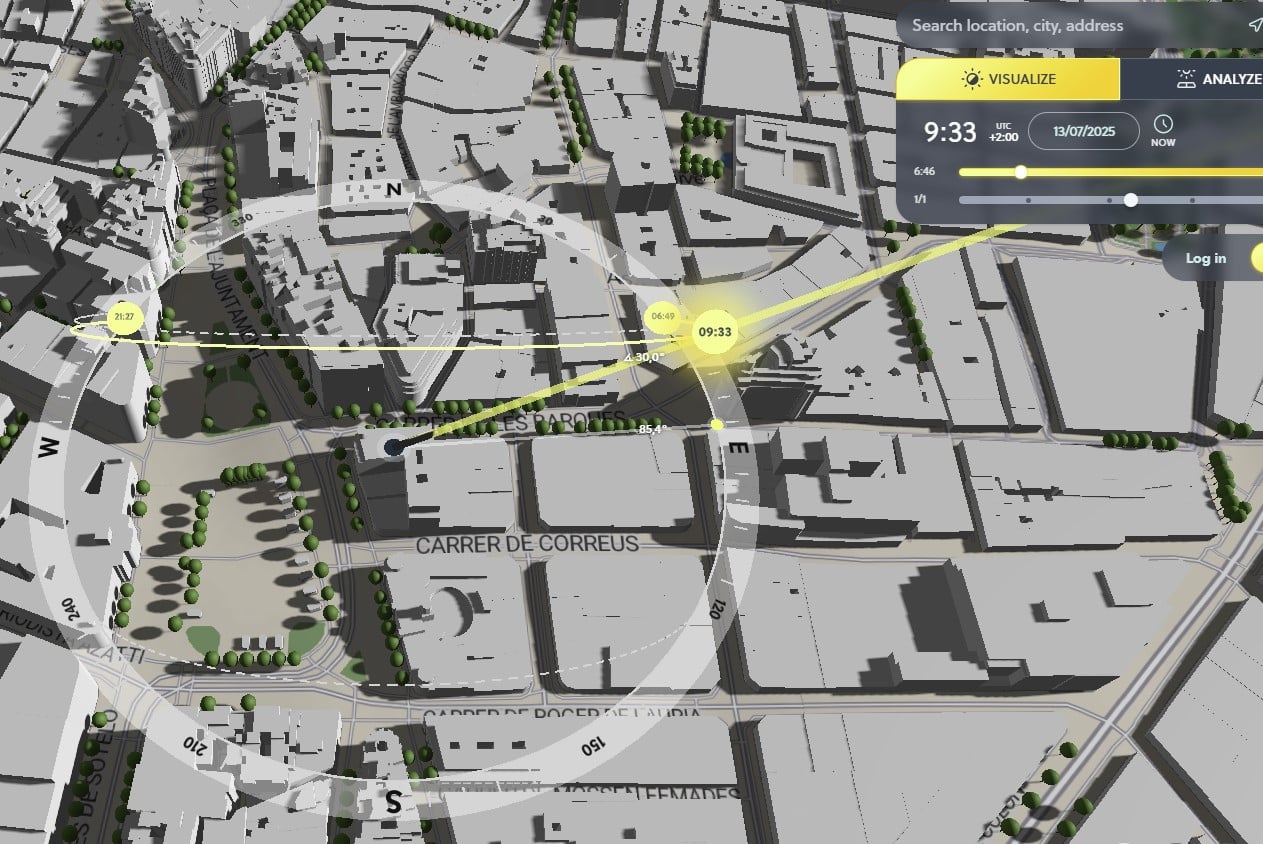
The installation company must study the sunlight exposure to identify shadows and optimal inclination according to seasonal consumption (winter/summer)
Shadows affect the production of the entire solar “string,” minimizing your savings. A shadow on just one panel negatively affects the rest of the panels, be very careful!
🟧 Note: If due to location, you have many shadows, the photovoltaic installation may not be profitable, calculations need to be made. Is there a solution to minimize the impact? Yes, and the technology is called optimizers whose goal is to reduce the impact of the shadow.
2. Inadequate sizing of the photovoltaic system
Both installing an oversized or small system reduces profitability. The key is to adapt it to the actual electrical consumption, avoiding waste or lack of generation.
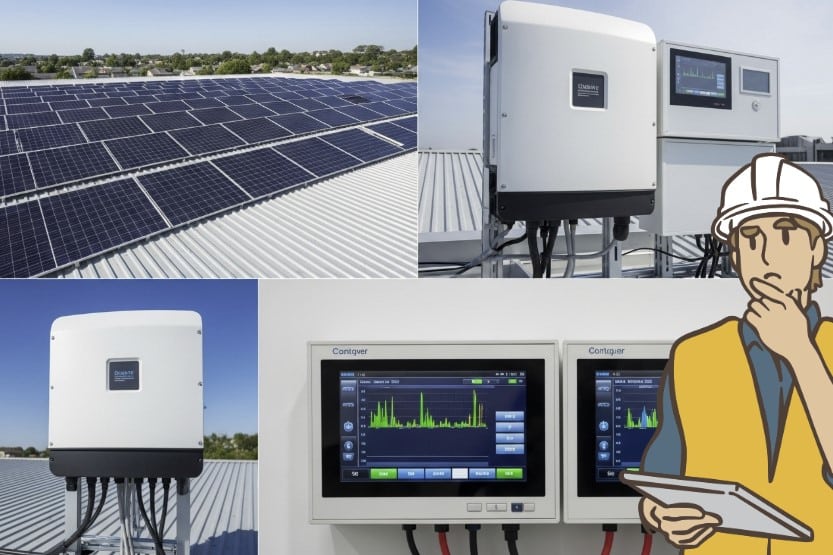
To start, my recommendation is to avoid standardized solar kits as they are generic solutions that do not adapt to the specific needs of each home.
Avoid standardized solar kits; they do not adapt to the particular needs of each home
The ideal is to find an installation company that conducts a personalized study and design for your home… What will they take into account?
- Electricity bills from the last year.
- They will review the average daily and hourly consumption in kWh.
- They will look at future needs: air conditioning, pool, electric car, batteries.
- They will consider the climatic conditions of the area and orientation according to location characteristics.
- They will take into account possible shadows, obstacles, and panel inclination.
The main thing is to analyze your home’s actual energy needs to ensure the solution is particularly suitable.
3. Not considering legality and subsidies
In general, it is necessary to declare and legalize any photovoltaic system in Spain, even isolated installations (not connected to the grid). An unregistered installation not only prevents compensating surpluses or obtaining subsidies, but it can also lead to penalties.
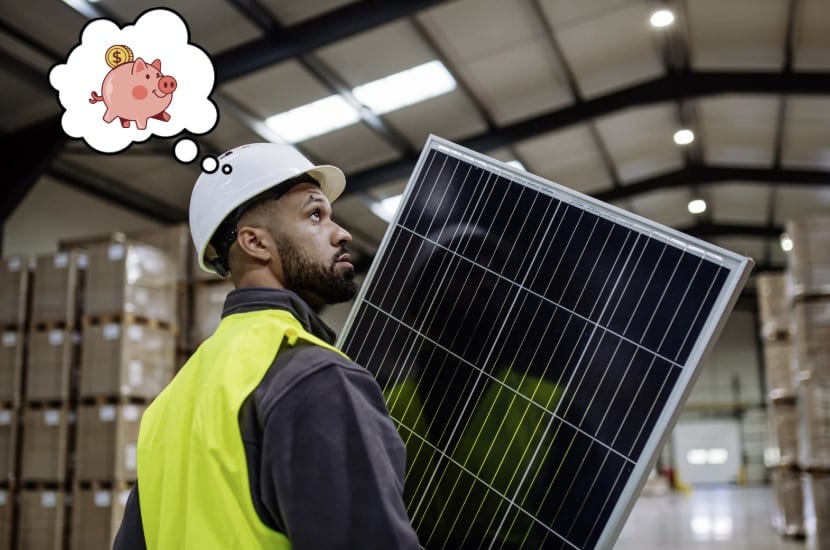
The issue of subsidies for renewable energy in Spain is a bit slow. Depending on the year, you will have for self-consumption at the national level, by Communities, which allow you to deduct from the IRPF or even reduce the IBI.
Where to look for self-consumption aid (Spain)?
- Autonomous Community: The website of the energy or environment department of your CCAA is the main source.
- Municipalities: Check their website for tax benefits (IBI, ICIO) and local aid.
- IDAE (Institute for Energy Diversification and Saving): Their website offers the general framework and regional calls.
- Installation companies: They advise you and often manage the subsidies.
Be very careful! The management of subsidies is slow and even more so in paying them, even years! Ensure that the economic viability of your installation does not depend exclusively on the payment of the subsidy.
Ensure that the economic viability of your installation does not depend exclusively on the payment of the subsidy
🟧 Note: As a note, in the village more than two years ago we installed solar panels in my parents’ house, they still have not received the subsidy.
4.- Selection of quality components and installation company
The decision should not be based solely on price. Photovoltaic installations are designed to last more than 20 or 25, even 30 years. Opt for mid-range or higher components from recognized brands with a track record in the sector.
Pay special attention to certified high-efficiency panels, to ensure good performance and minimize failures. This will translate into greater economic savings in the long term. Look at the following infographic with tips for buying solar modules:
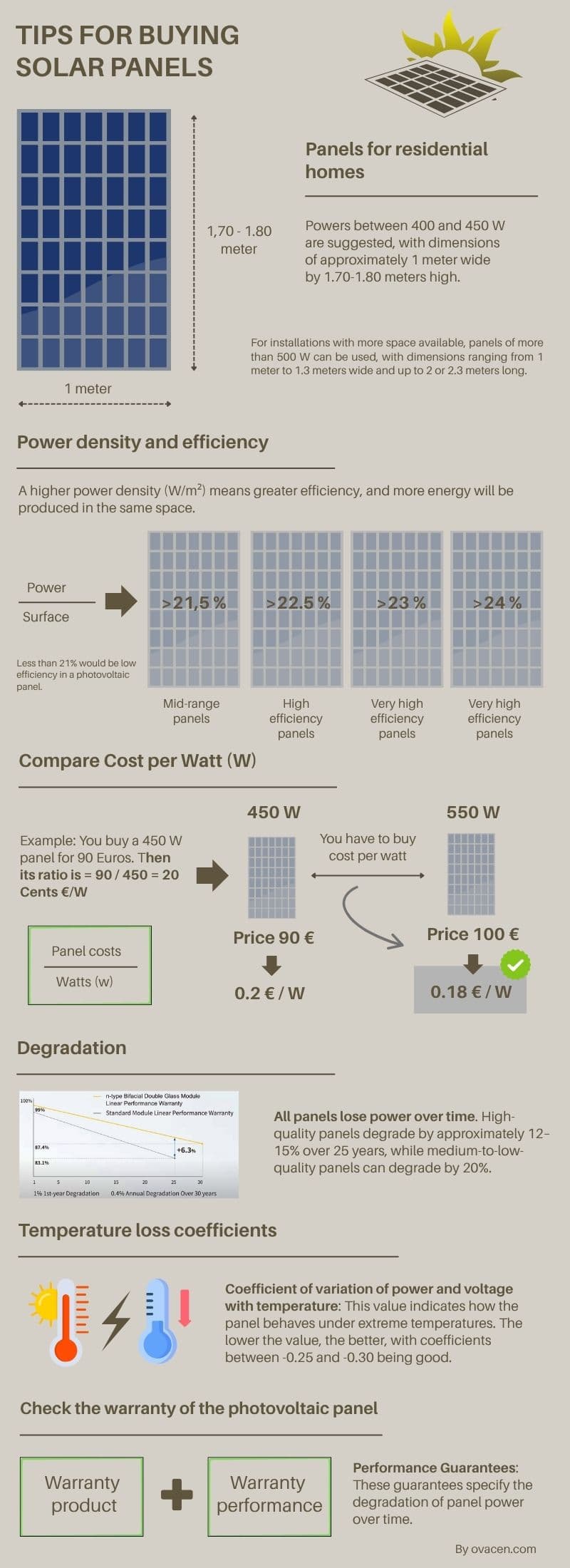
Similarly, when choosing the installation company, be careful with the cheapest ones. Look for a serious company that demonstrates experience in other installations, that has recommendations and check reviews, it is very important!
If when comparing quotes from different installation companies they vary greatly in price, I advise you to contact an external photovoltaic expert to advise you on the best option.
When comparing offers, do not only look at the overall price, but at the cost per installed peak kilowatt €/kWp
The cost per peak kilowatt (€/kWp) is the most transparent and reliable indicator to compare different photovoltaic installation offers. It helps you see the real value of your purchase, ensuring the appropriate power at the best possible price.
5.- Not paying enough attention to the climate
The local climate is fundamental for the sizing of the installation. For example, a 5-kilowatt installation in Seville will produce more energy than one of the same capacity in another place with less sun.
Temperature has a radical effect on the behavior of photovoltaic panels; at higher temperatures, the panels perform worse. It is normal that in summer, despite the high insolation, there are production losses (15-20%) due to temperature.
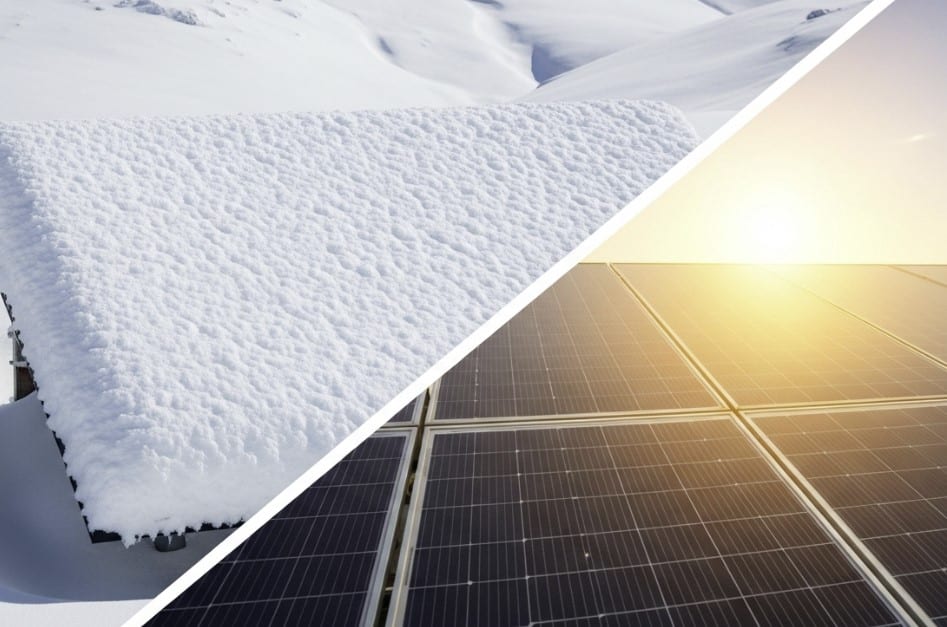
So will the panels produce less electricity in summer? No. Solar panels produce more electricity in summer, despite the loss of performance, they are more exposed to sunlight for more hours a day.
The climate influences both the technical aspects of energy production and the energy consumption practiced by users
Also, in very low temperatures, the open-circuit voltage of the photovoltaic panel increases. It is crucial to consider this when sizing the panel string (the “String”) to not exceed the voltage limits of the solar inverter.
🟧 Note: The technical sheet of the photovoltaic module includes a section of loss coefficients due to temperature (Current, voltage, and power Coef.) the more reduced these coefficients are, the better the photovoltaic panel will perform at high temperatures.
6.- Do not walk and avoid leaning on solar panels
The internet is full of videos of people cleaning solar panels on top of them or even a technician who has their entire body on top connecting or repairing something, it is not done!
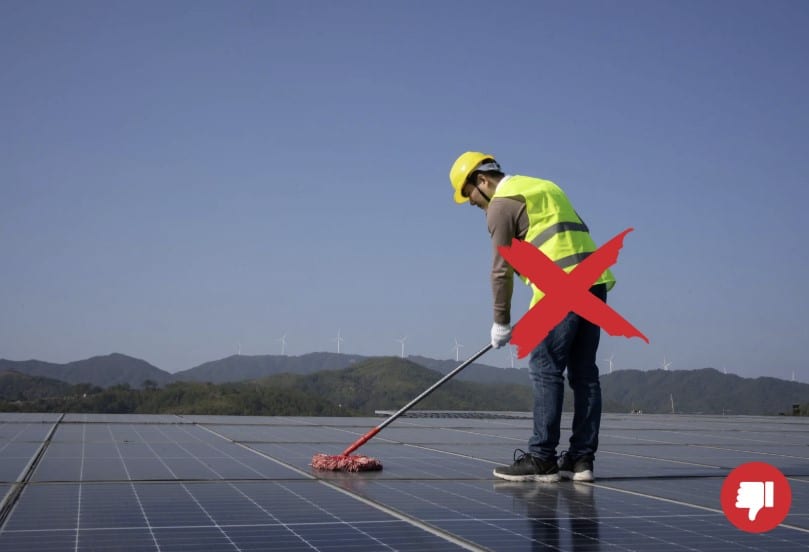
Although the panels seem robust, stepping on them, applying pressure, or suffering slight blows can generate invisible microcracks
Microcracks may be imperceptible to the human eye, but they are a significant source of hotspots. Hotspots are areas of the module that heat up more, and can lead to very serious problems.
7. Not anticipating the maintenance of the photovoltaic system
The accumulation of dust or dirt reduces energy efficiency by up to 20% annually. Even being low-maintenance systems, they should be inspected regularly.
The durability of the photovoltaic installation depends a lot on maintenance, take note!
A dirty photovoltaic panel can produce 20% less than a clean one. If we account for this over the lifespan of the installation, we are losing a significant amount of money.
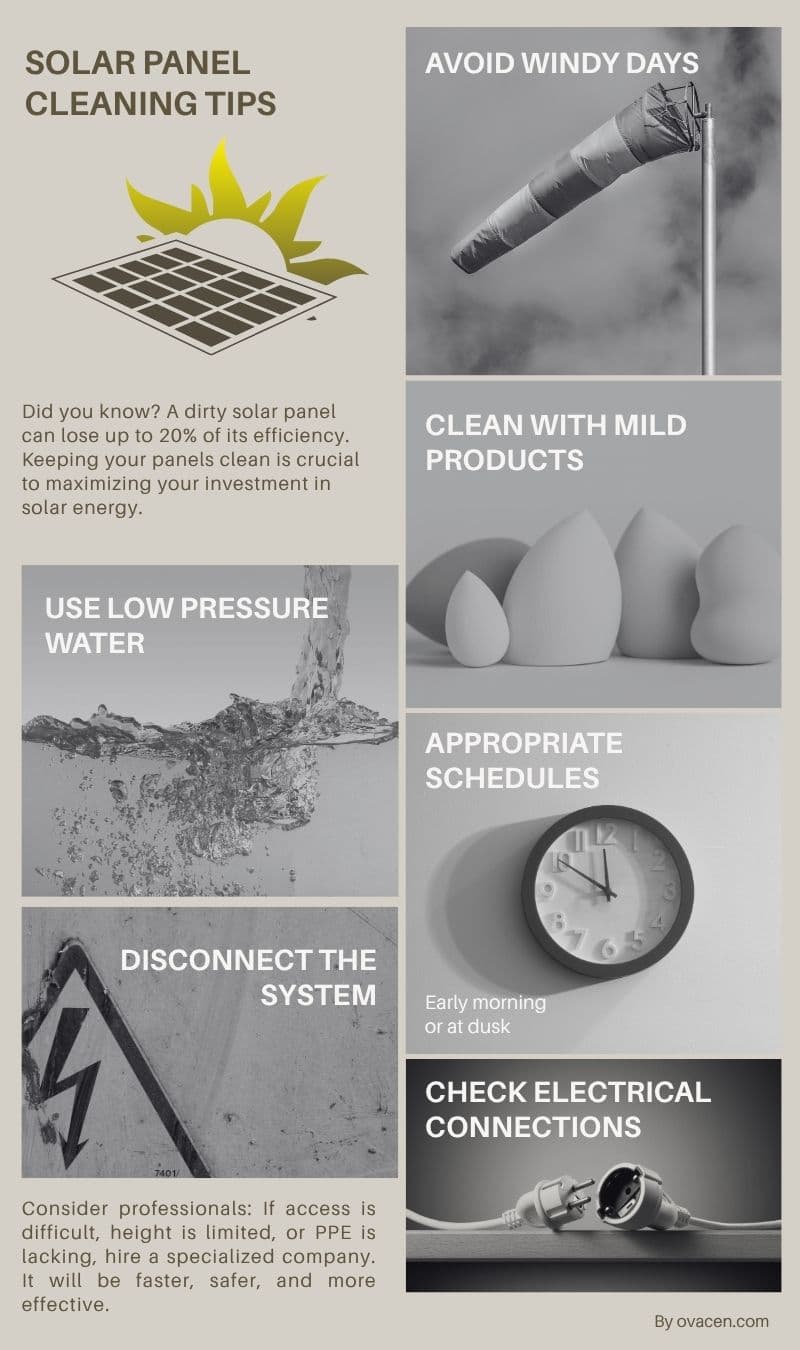
The cleaning of the panels depends a lot on the location; climates with a lot of dust, sand, frequent rains, birds, or if it is a saline environment, will require more regular cleaning. In general, you should:
- Clean approximately every two or three months with water and a soft sponge.
- Remote performance monitoring through inverter apps.
- Annual reviews of the inverter, wiring, and protections.
- Consider hiring a preventive maintenance plan.
A well-designed solar installation can last more than 25 years and generate savings of up to 70% on your electricity bill. Do not risk your investment. Choose quality materials, get advice from professionals, and act wisely.
Solar energy is an opportunity… if executed well. Plan, compare, demand guarantees, and bet on a system with a future.
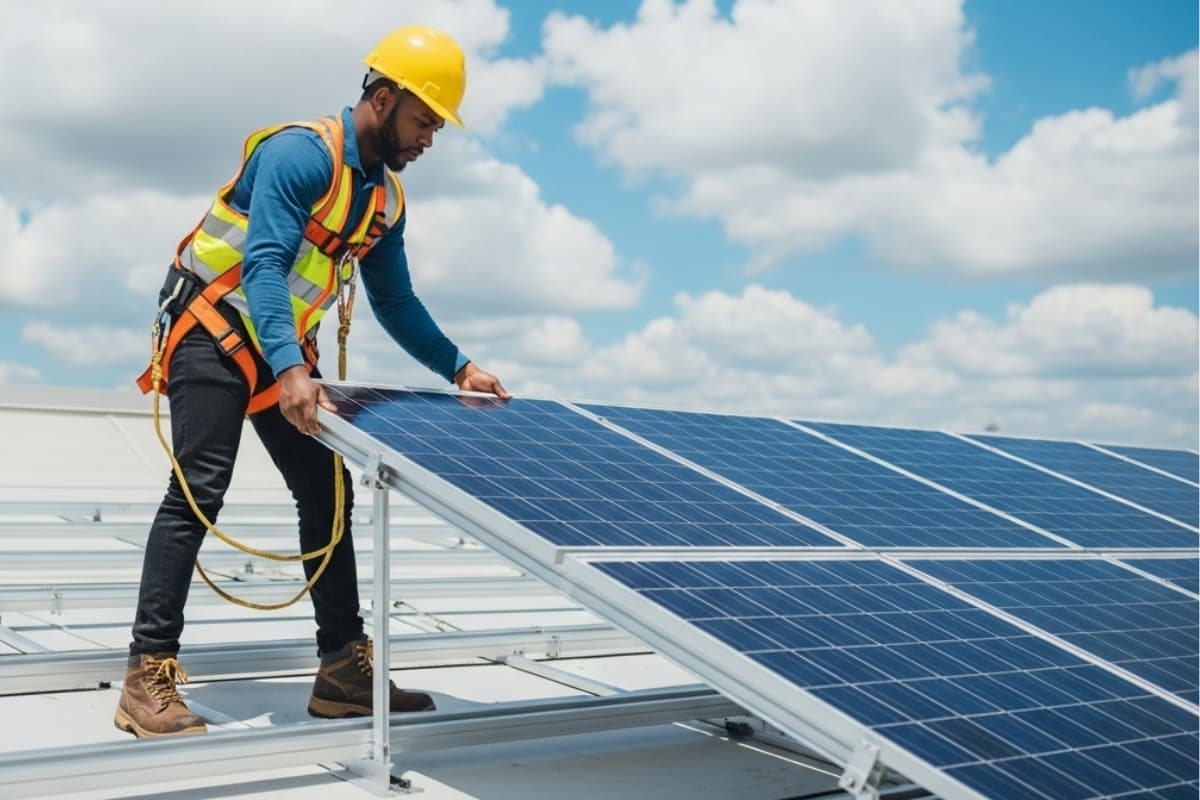
This is a very helpful guide! Many homeowners underestimate the importance of proper placement and wiring when installing solar panels. I especially agree with the point about not checking roof integrity beforehand—it can save a lot of trouble later. Also, researching incentives and choosing the right installer can make a huge difference. Great tips to avoid common mistakes and get the most out of solar energy.
Thank you very much, GB Khaan, for the comment. It’s appreciated! In the end, as a colleague always tells me, if you hire a quality company for your solar installation, you’ll have far fewer problems in the future. Best regards.